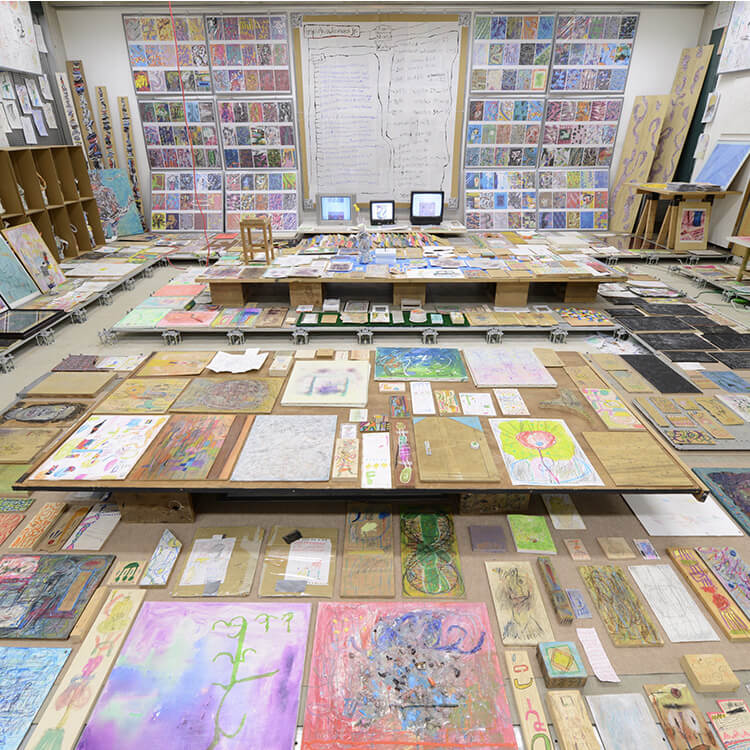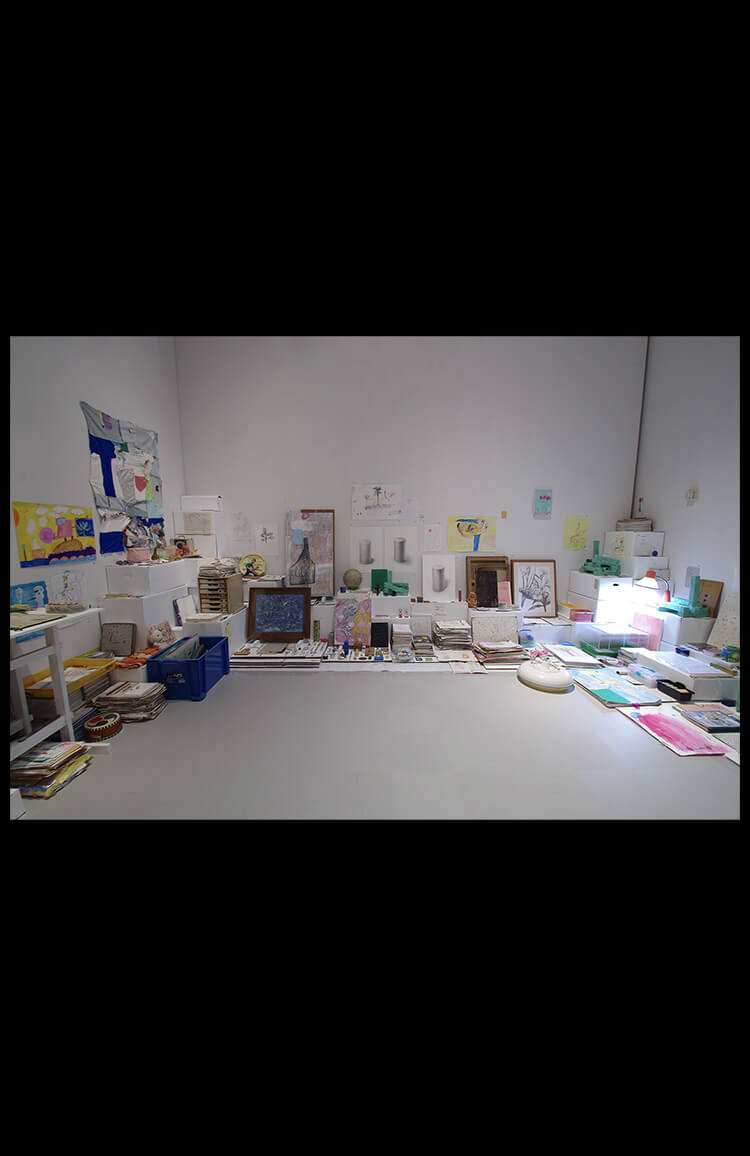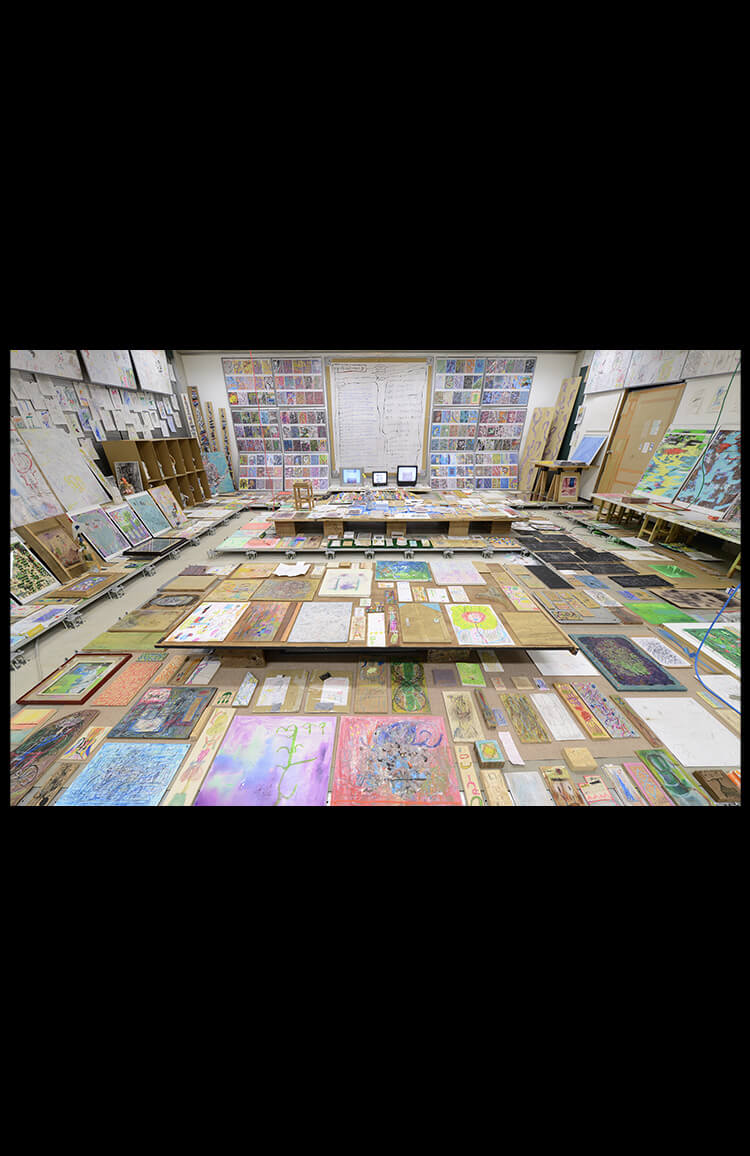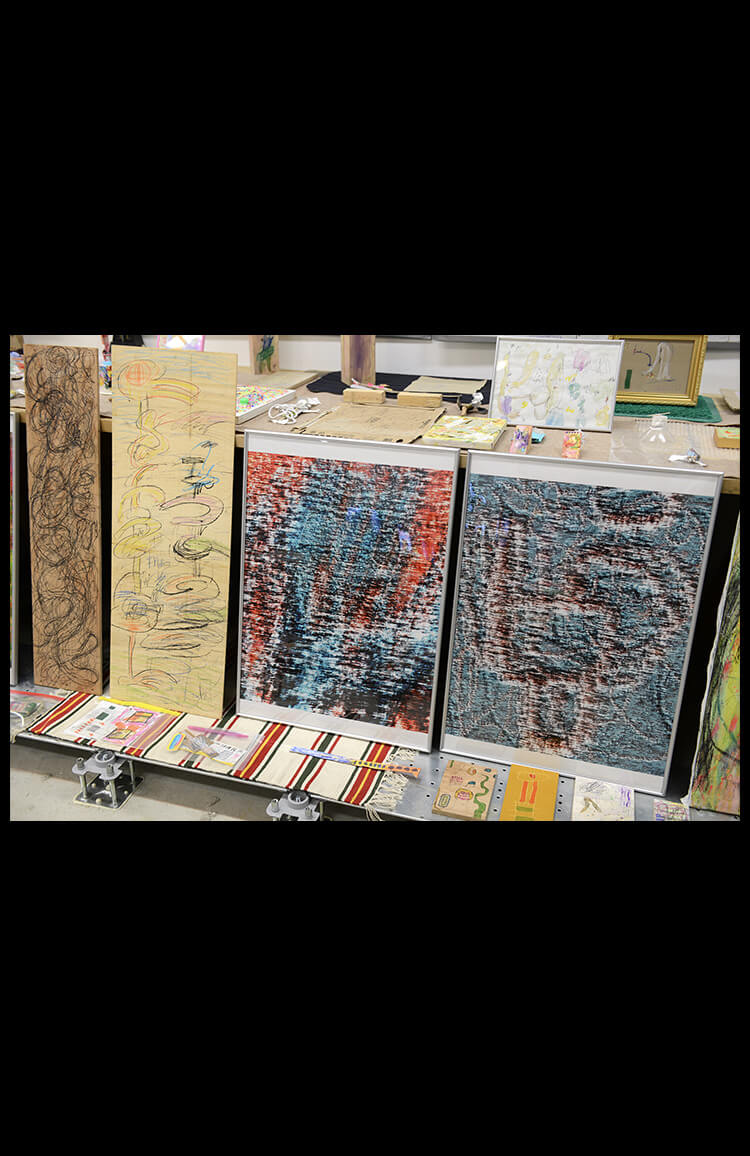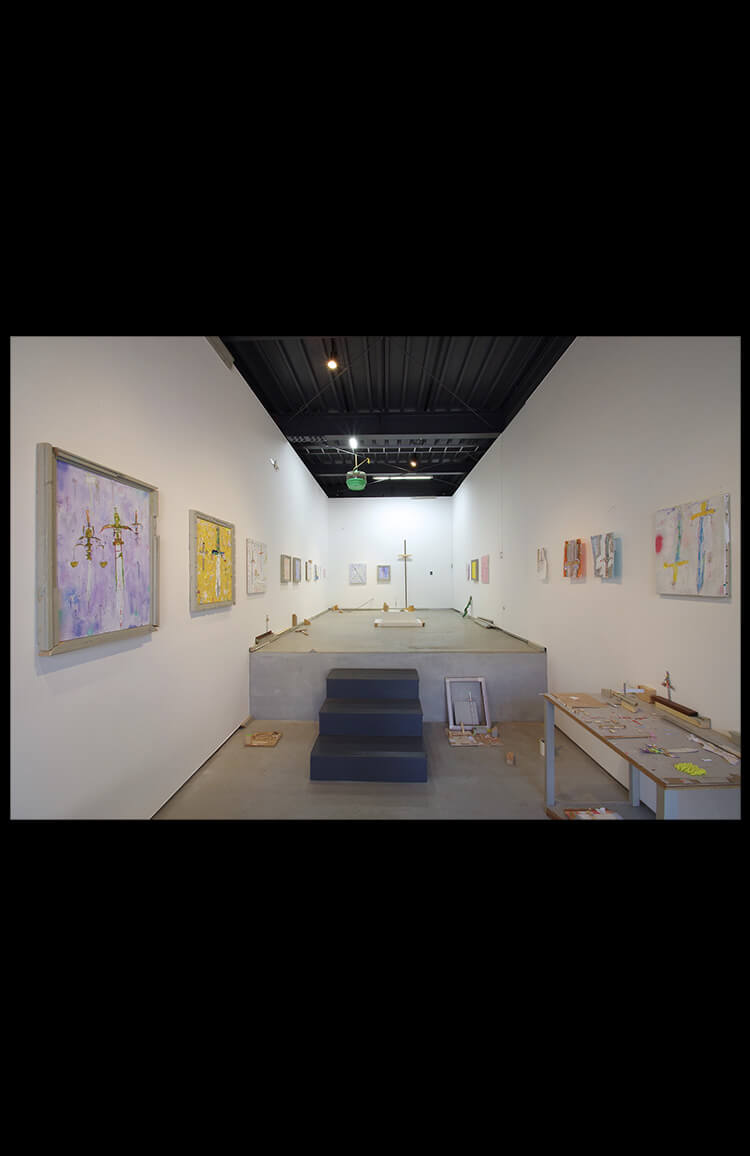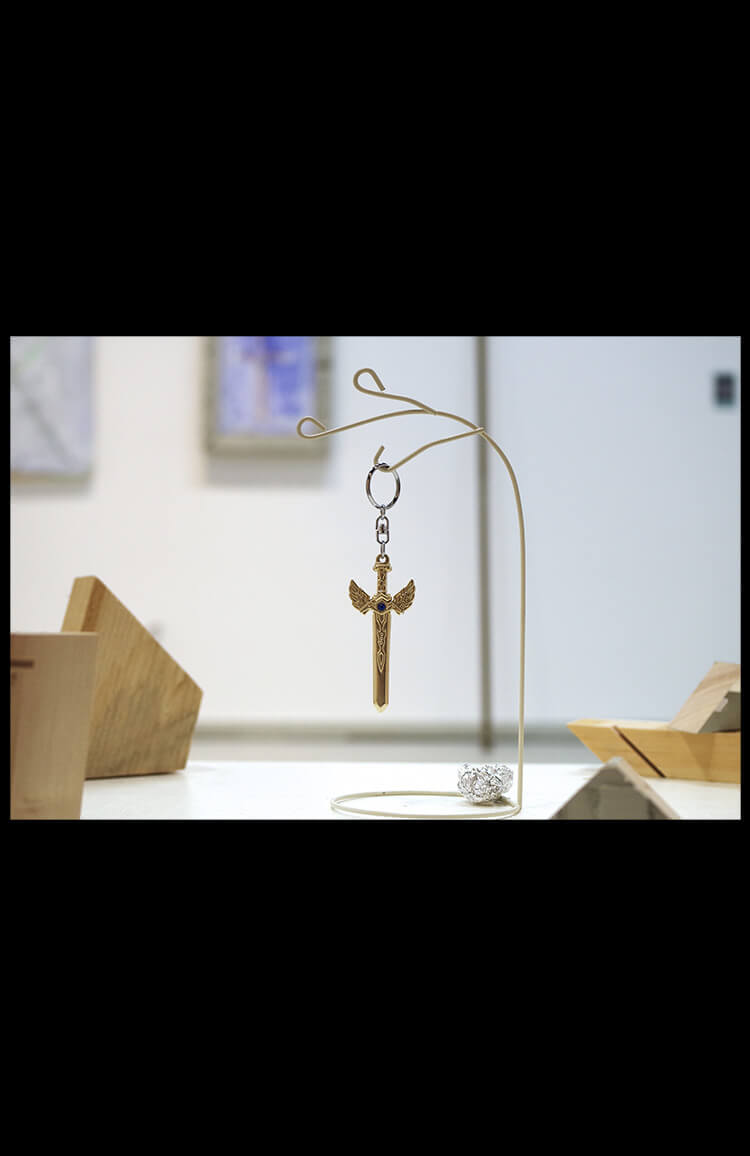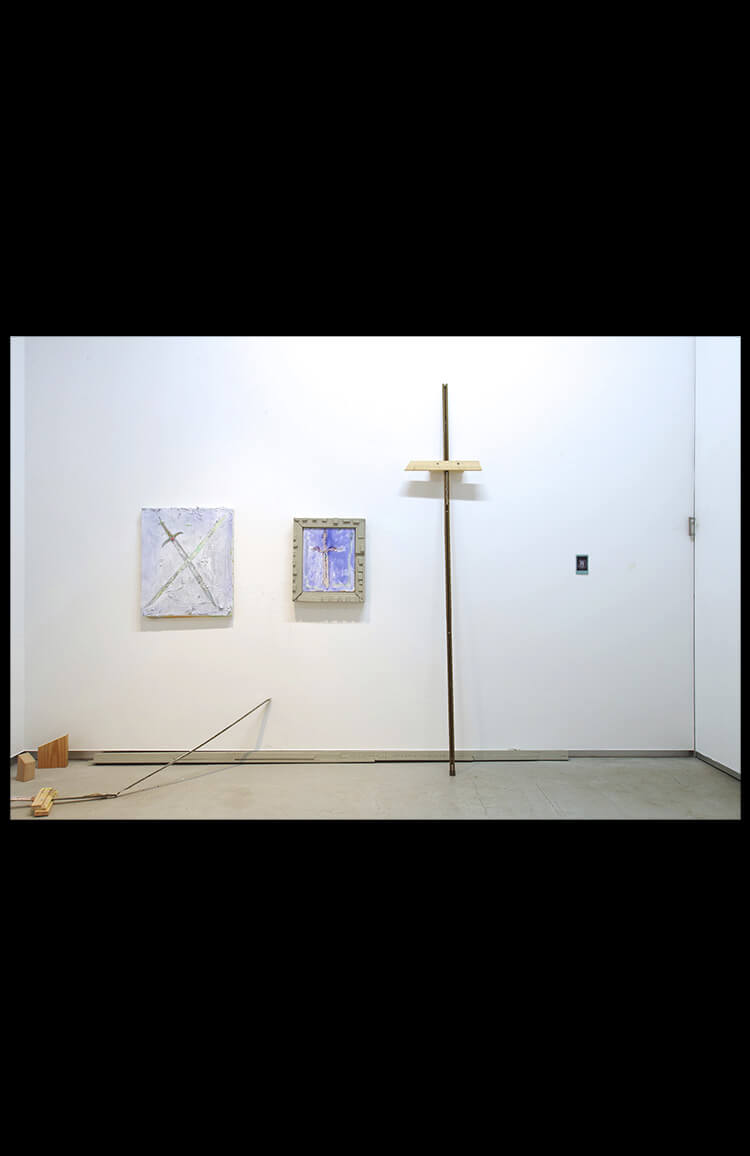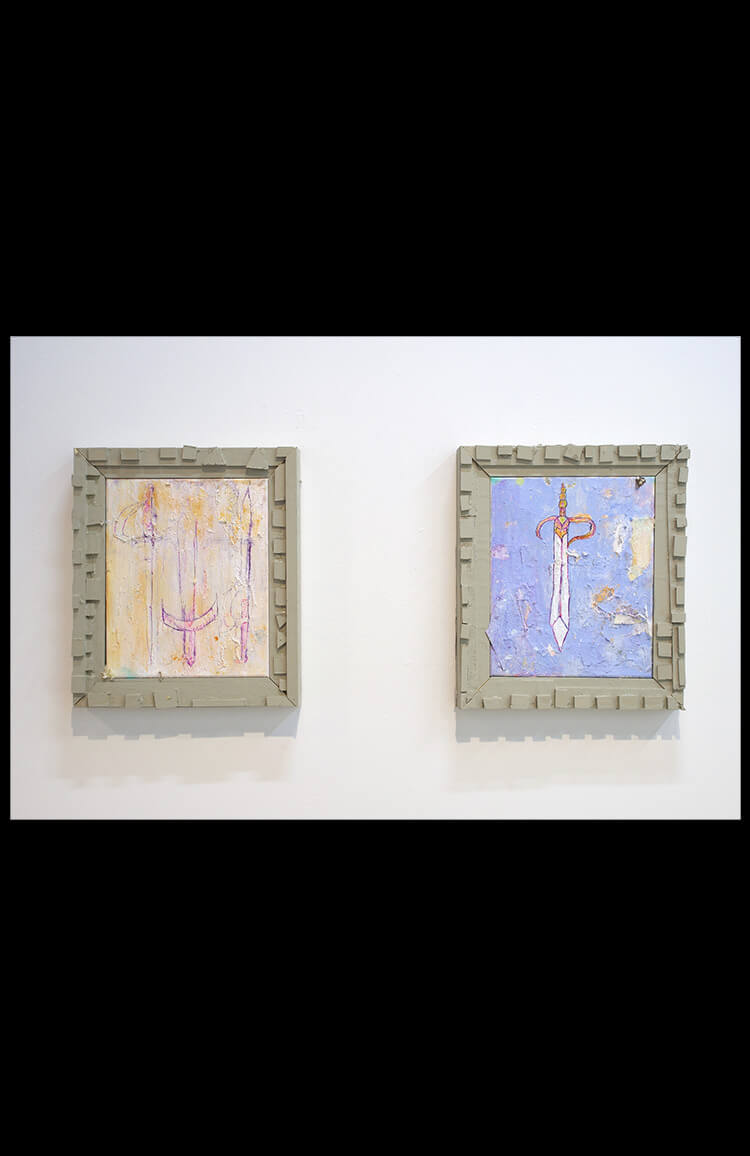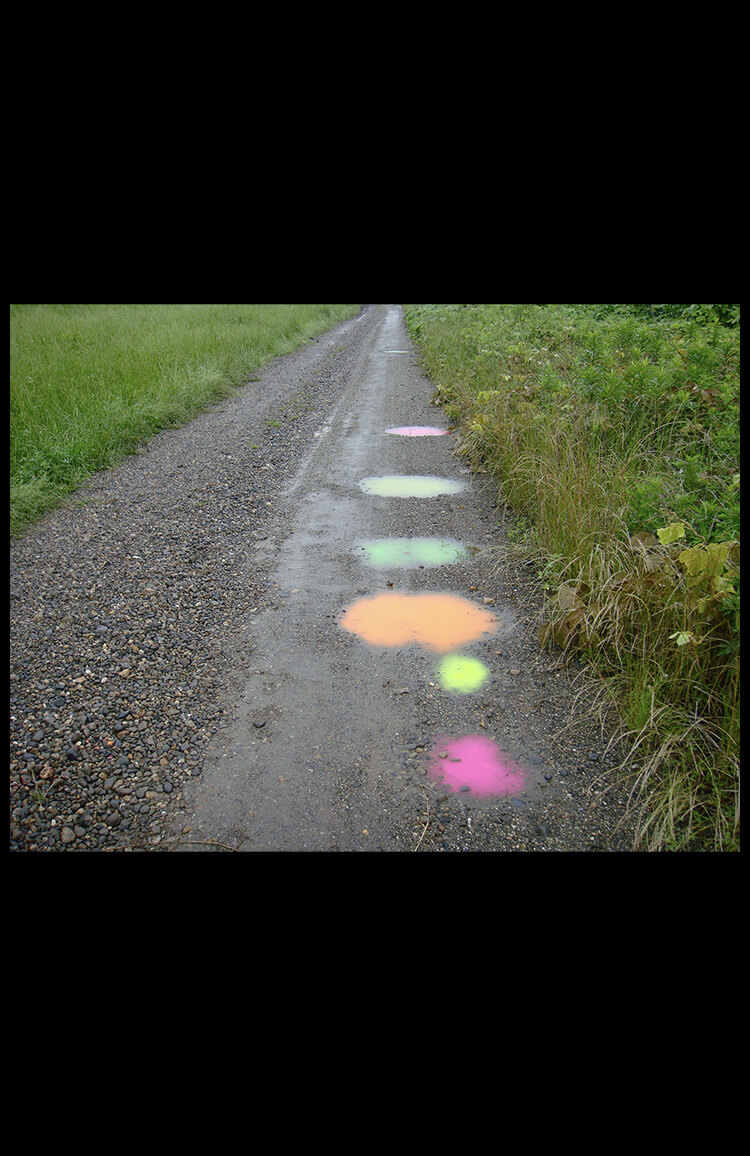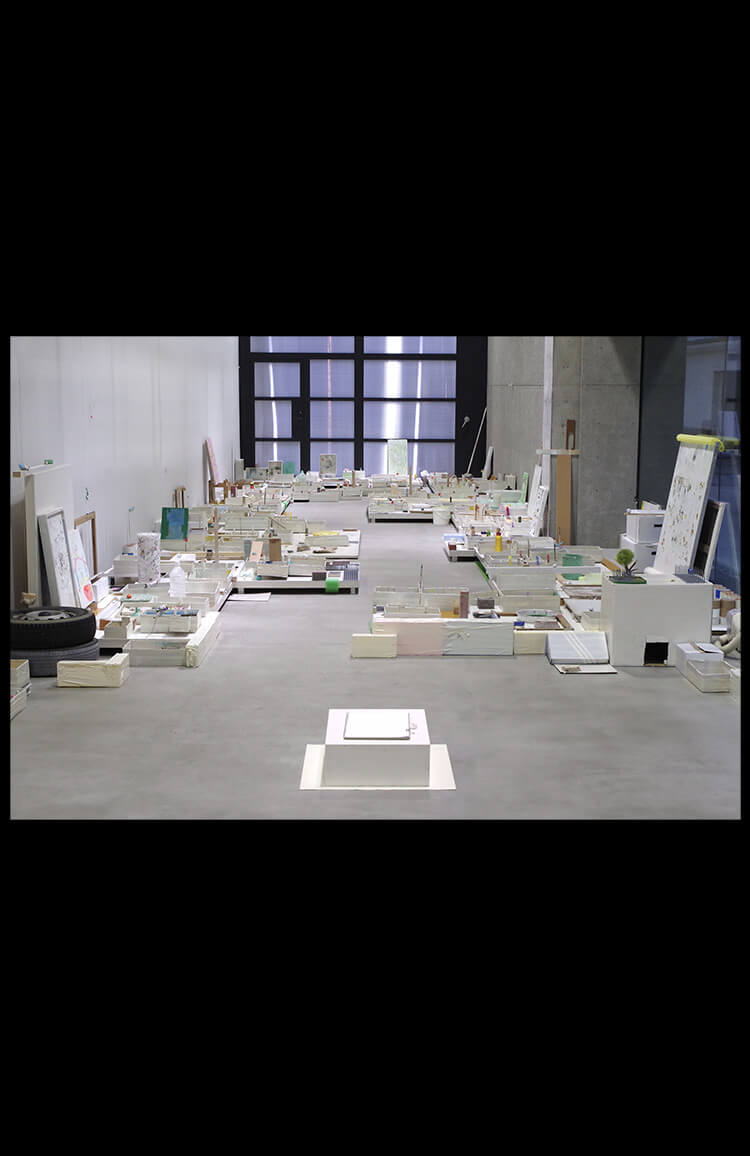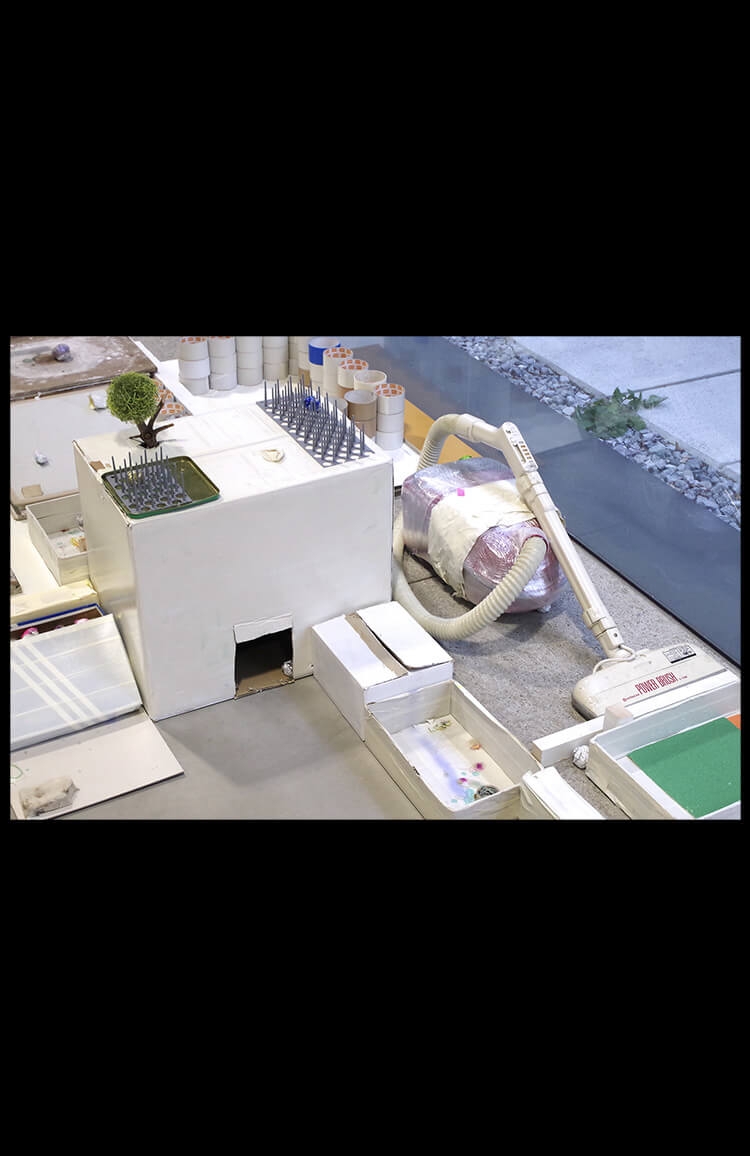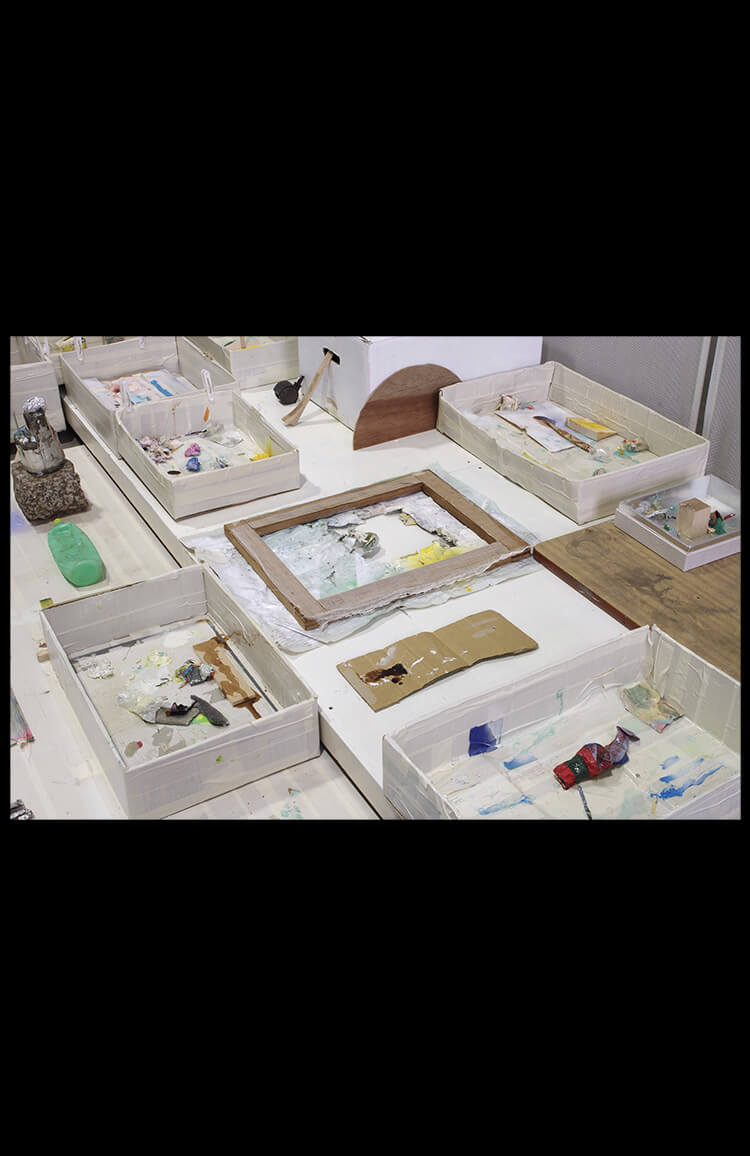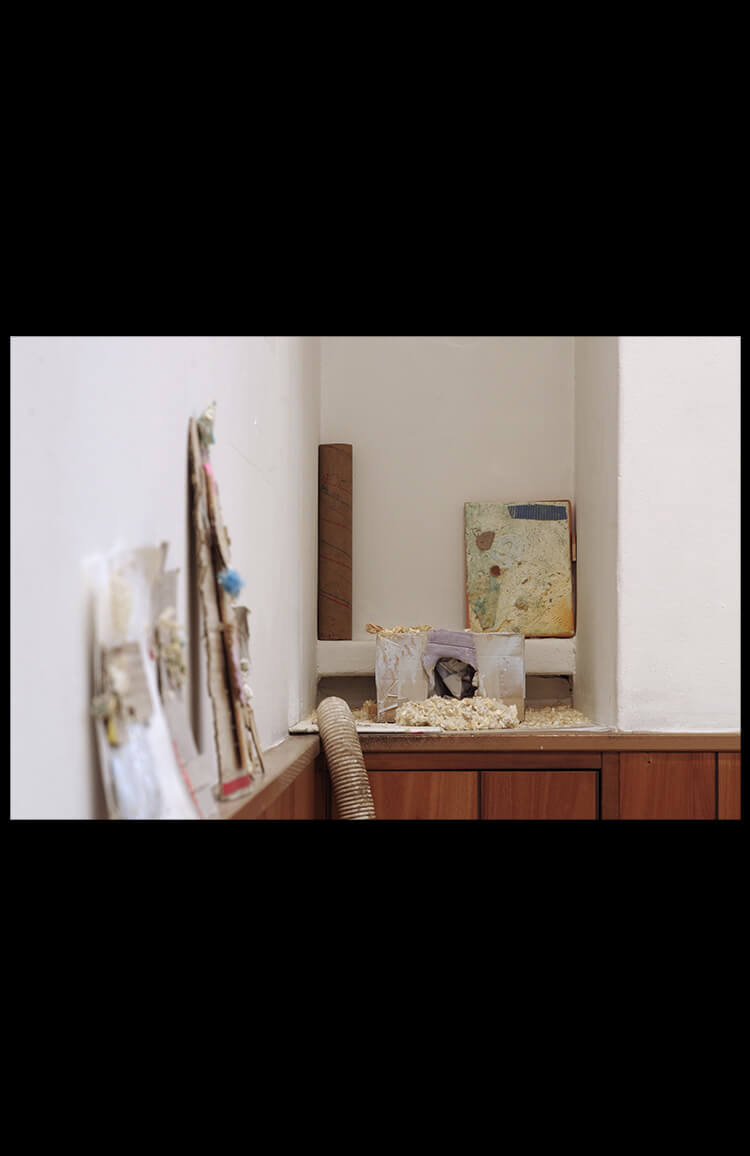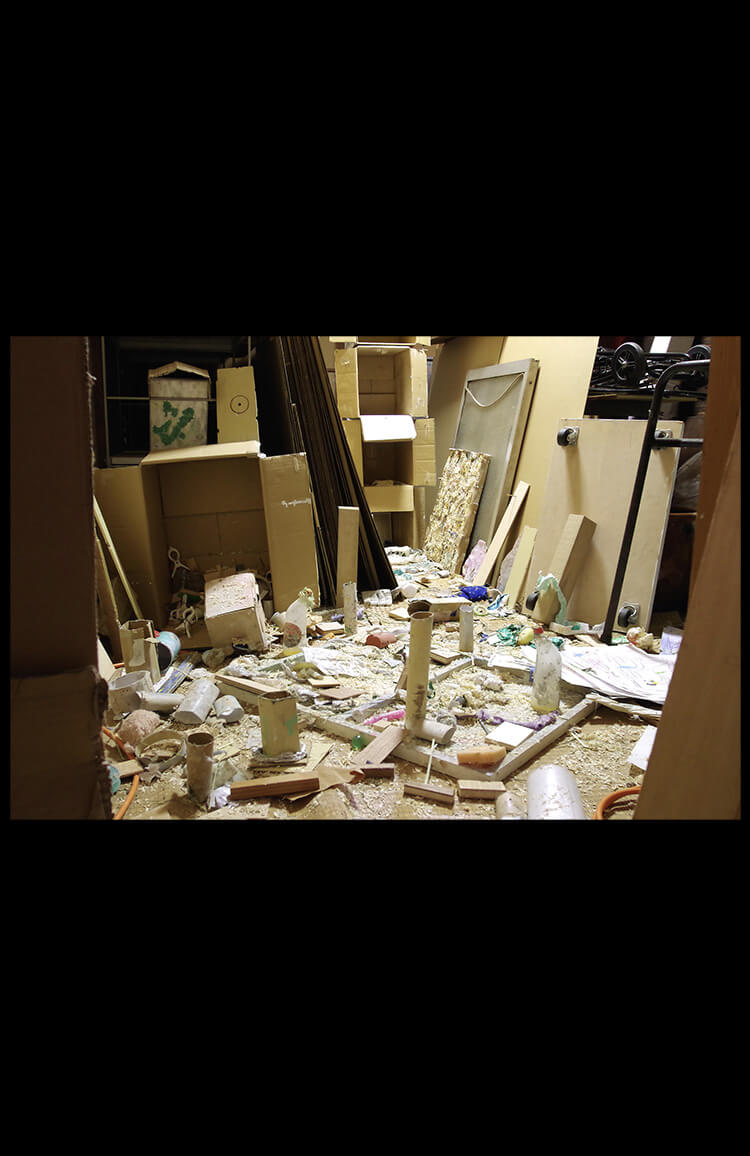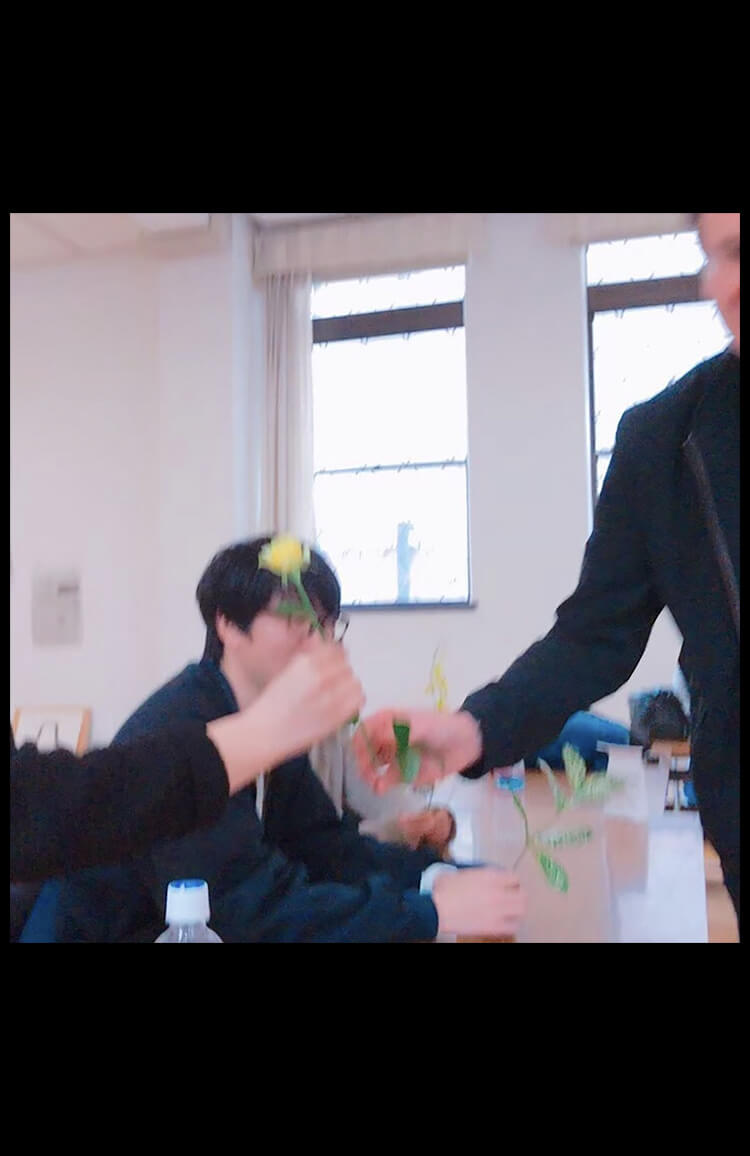IL__Do you think your painting and your installation have become separate practices recently?
YM__Well... for both installation and painting I picture the exhibition space in my mind when I'm making works. So even if I only show paintings, the order in which they are arranged is essential for me, and, as a result, my work can look like an installation. When you exhibit your work in a museum, it may be okay to present every piece as one installation. Still, when you show your work in a gallery, you have to sell your work. So I've come to the conclusion that it may be necessary to separate 'painting' from 'installation'.
IL__In an exhibition like 'KEN & Peace', where you presented paintings and an installation, did the installation provide a context for the paintings?
YM__Yes, it was more like creating a space for the paintings.
'KEN & Peace' was held in a space called HIGURE, and there was a small staircase there. When I saw the staircase, the show's concept came to my mind. It would be a 'game', using the staircase as a dungeon or a temple. When I'm doing a show, I visit the actual venue first to get a sense of its atmosphere and then decide the plan and concept. For this exhibition at im labor, I heard that the space used to be an orthopaedic clinic, so I'm thinking of making the exhibition look like a clinic.
I've always worked and done exhibits outdoors, so I feel that my work has a site-specific tendency, and I like to make an exhibition using what already exists in a venue. I used to make things that expressed my resistance to commercial galleries, with their beautiful giant white walls and lighting... but as I continued, I started to feel that was none of my business. Now, I feel like I've come full circle.
IL__I see. I remember that your practice was more engaged with graffiti and earthworks when you were enrolled at art school. What were you trying to explore through your practice at that time?
YM__I think it was around 2008, before I started university, that the post-graffiti movement was quite popular. In post-graffiti, you leave some object at the site, like footprints, instead of spray painting. I was a prep school student at the time, and I read many articles and went to symposiums on post-graffiti culture.
Painting in public space illegally is a part of graffiti culture, and it's a form of expression. I wasn't interested in that aspect, so I tried to express myself using the graffiti format but in a legal way, for example, by using natural objects at the site, which would revert to nature over time. It cannot be called entirely legal, though. Of course, I thought the anarchism of graffiti was cool, and that's the essence of the practice. So at that time, I was interested in making work in public.
However, when I became a part of the academic world at art school, I began to find it contradictory to do something like graffiti. As a result, I became less and less able to do graffiti-like work.
IL__I understand. In addition to these outdoor activities, I heard that art brut and outsider art have also influenced you. Can you talk about how you've incorporated these into your practice?
YM__Along with graffiti, I've always been interested in art brut and outsider art. But I think these arts also became inaccessible for me after I went to art school, for the same reason that I stopped making graffiti-like work.
It was unrealistic for me to draw something in the style of art brut or outsider art, as I was in art school and studying academically... But I wanted to draw in this style badly, so I did a kind of training to get beyond the dilemma. My degree show, 'Alchemy of Liverty', was a compilation of that training. Even though I continued to train in this way, being influenced by outsider art and art brut came with the feeling that I was exploiting their innocence. So, after thinking about how to become a real outsider, I decided not to go straight to graduate school after my BA but to work as a labourer. Looking back now, that decision was probably influenced by the Art Brut artist Martín Ramírez.
IL__I think there was a significant change in your work since you started working outside of the art community, for example, in 'KEN & Peace'.
YM__I think I found a more serious reason to express myself on a personal level. Before, the motivation for doing art used to be more about the system or the outside of myself.
Becoming an employee or part of society was also about my attitude towards the social system and education. But, ironically, working as a labourer made me realize my stereotype view of being a worker was based on a stereotype, which made me feel guilty.
They were doing their work because they loved their jobs, while I was working temporarily for the sake of art. After this realization, I started to think about how I could fit in and adapt myself to the company. I worked there for two years, and I saw a significant change in myself during the experience. When I came to the point that I thought 'wow, I may be ended up working for this company until I die', I quit the job and decided to do my MA because I wanted to concentrate fully on art again.
IL__For your MA show, you presented 'You Should Make a Kingdom', 2019. I love this title too. What is the work about? Also, where did the title come from?
YM__I made this work in response to a dream I had. It's pretty common for art brut artists to make works based on their dreams, and when I had the dream I thought, 'oh my God, it's finally happening to me'. I think I was able to create something that was inevitable for me through the show.
But even at this moment, I feel guilty for thinking I was lucky and incorporating the dream into the work as if I were an art brut artist.
IL__Feeling guilty again. *Laughs*
While listening to you talk about your practice, I feel like you tend to leave control of making artwork to the outside.
YM__Yes, I think so. I think I'm controlled by things in the external environment. I make artwork because I see something and think it's cool , and then I incorporate it into my practice. Or perhaps I'm just posing as though I'm following external rules and environments in order to find something interesting. I don't think that an artist can be absolutely righteous, so I'm not afraid of being amused by something or unconsciously exploiting it.
At the moment, I'm just trying to make something better by being inspired by the great things outside of myself.

